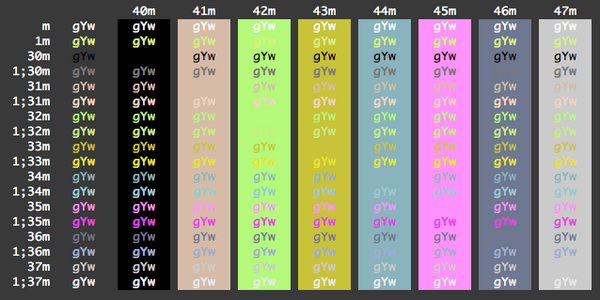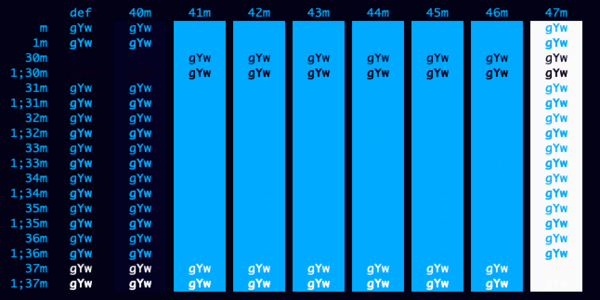
If selected, tabs will indicate their keyboard shortcut. Instead, the number of rows of text inside the window may change. When enabled, the window will not change size as the tab bar is shown or hidden. Preserve window size when tab bar shows or hides If selected, the tab bar will remain visible when a window contains exactly one tab. Tabs Show tab bar even when there is only one tab When enabled, an icon representing the current directory is added to the window's title bar.

Turn this off for a sleek appearance with the dark theme. Show line under title bar when tab bar is not visible If enabled, entering fullscreen mode will automatically turn off transparency for that window.

#Best iterm themes windows
Disable transparency for fullscreen windows by default If selected, scrollbars will be hidden in terminal windows. Opaque windows get a border drawn by the OS. On macOS 10.14, window borders are only drawn for windows with some transparency. If selected, a 1-pixel border will be shown around the edges of terminal windows. You can also change which modifiers are used in Preferences > Keys. You can navigate to a window by pressing cmd-opt-N where N is the window number. If selected, window titles include the window number. This is useful if you only use hotkey windows and you want iTerm2 to keep a low profile. An icon will be added to the right side of the menu bar that lets you get back to iTerm2's preferences. When this setting is enabled, iTerm2 will disappear from the dock and you won't be able to switch to it with Cmd-Tab. Exclude from Dock and Cmd-Tab Application Switcher If you'd like the menu bar to remain visible when a fullscreen window is present on a screen with a menu bar, turn this on. When native fullscreen mode is disabled (in Prefs > General), this option is available.

Auto-hide menu bar in non-native fullscreen Status Bar Locationĭefines where the status bar appears, if enabled. Tab Bar Locationĭefines whether tabs appear at the top, bottom, or left side of your windows. The area around them, when revealed, can be used to drag the window. Mouse to the top left of the window to reveal the red, yellow, and green buts. If tabs are on the bottom or the left, you can move the TheĪrea between the red, yellow, and green buttons and the first tab can be used In Minimal and Compact, tabs go in the title bar if the tabs are on top. The standard colors are used, but the title bar is eliminated to save space. Compact - A combination of Regular and Minimal.Minimal - This is inspired by the appearance of Electron apps.Switches between dark and light mode automatically based on the system setting. On macOS 10.14 and later, there are two additional options: On macOS 10.13 and earlier, the options are Light, Dark, Light High Contrast, and Dark High Contrast. The theme affects how the areas outside the main terminal view are drawn, including colors and fonts. That’s all I need.Allows you to select the theme. You see the git branch and the directory you’re in.
#Best iterm themes full
They range from very simple and minimal to fancy and full of data that many would find useful.īe sure to post down in the comments what your favorite Oh My Zsh theme is. I know you may be wondering, “How did he determine this? How does he know what the top themes are? Isn’t that overly subjective?”īut I have chosen 10 that I think represent the wide range of styles found in the 100 or so Oh My Zsh themes out there, many of which I have used myself. In this post I want to give what I think are the top 12 Oh My Zsh themes out there. It’s become an essential tool in my developer toolkit. zshrc # edit file with vi editor # hit the "i" key to be able to insert text and edit file # replace theme name with whatever theme you want to use (see below examples) # when finished, hit the escape key, then :, then wq to write and quit vi # finally close and reopen your terminal (or type src and hit enter if you are using the oh my zsh source shortcut) Top 12 Oh My Zsh Themes for Productive DevelopersĪs stated in my Top 10 Oh My Zsh PLUGINS post, Oh My Zsh is an open source framework for Zshell with many themes, plugins, and productivity hacks. Cd ~ # to get to your root directory where the.


 0 kommentar(er)
0 kommentar(er)
